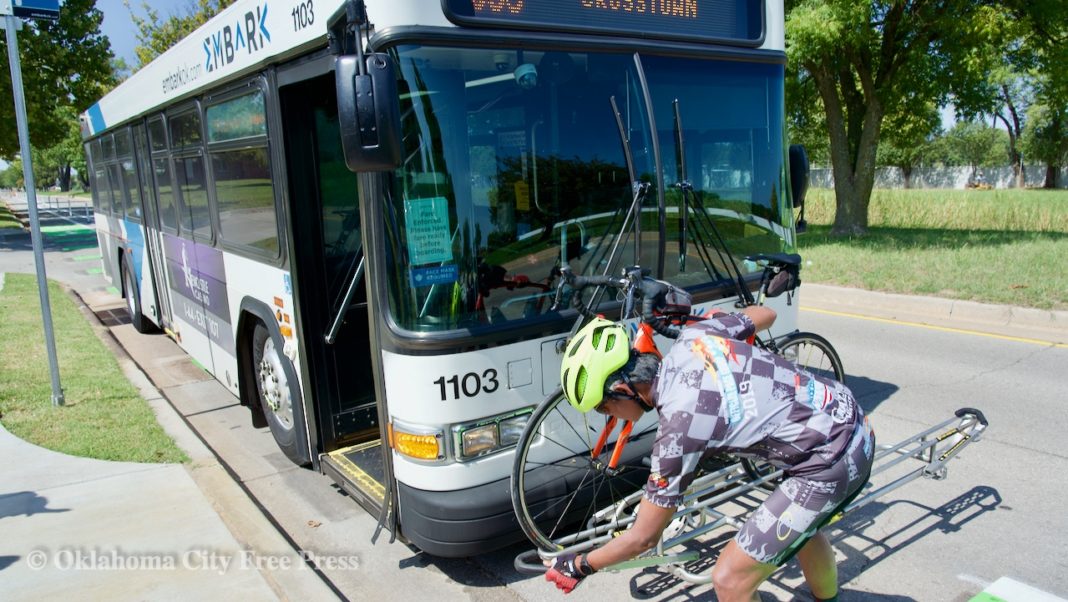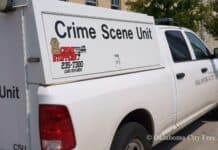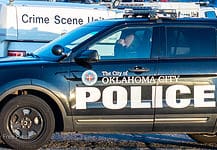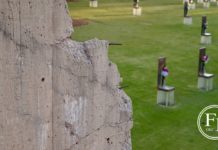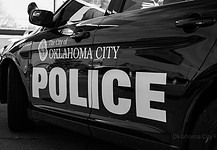Last Updated on March 25, 2021, 5:35 PM | Published: March 25, 2021
OKLAHOMA CITY — Thursday, a virtual town hall was hosted by EMBARK, Oklahoma City’s public transportation, and parking authority, on the subject of a planned Bus Rapid Transit (BRT) route coming to the City over the next few years.
Jason Ferbrache, EMBARK director, and Jesse Rush, Assistant Director, were joined by two consultants to explain the plans for the project. Participants were allowed to submit questions, which were addressed at the end of the meeting.
Bus Rapid Transit
The BRT route has been in the works for several years, but a couple of years ago the City received a significant grant from the federal government, so implementation planning was ramped up.
BRTs are designed to mimic rail service, but with rubber tire buses. BRTs work along a fixed route with fewer stops than traditional fixed-route buses, and operate on a shorter schedule.
The coming BRT in Oklahoma City will traverse a route starting downtown and travelling to its final stop at Northwest Expressway and Meridian, operating on a ten to fifteen minute schedule.
Consultant Presentation
Two consultants from the firm HNTB were in the meeting to give a presentation on design and route plans.
First was Brian Comer, who explained the physical aspects of the new project.
Comer explained that there will be a fleet of nine buses, two as back-ups and six on the route. Those buses will be distinctively branded for the BRT route and will look different from the traditional fleet of EMBARK buses.
NWBRT_ProjectOverview_20190315To learn more: Go to the EMBARK page with full information along with presentation decks about the BRT.
BRT stations will look much the same as EMBARK’s streetcar stops. Each stop is planned to have two bike racks, and each will be ADA compliant. The stations will be well lit, and new sidewalks will be built where needed to connect pedestrians to intersections.
Comer said that the purpose is to make the stops safe and inviting for all customers.
Comer also touted the connectivity of the BRT to pedestrian and cycling infrastructure, as well as fixed-route EMBARK bus services. He stated that there are plans for three park and ride locations along the route, which also intersects at several points with Oklahoma City’s bike trail system.
The route serves three hospitals, Comer said, and comes within a half mile of over 40,000 residents.
BRT Route
Marcus Geist of HNTB walked viewers through the planned route of the BRT.
Altogether, 32 stops are planned for the route.
The route will originate at Broadway and Main in downtown Oklahoma City. From there it will travel to the transit center on Hudson between 4th and 5th, where it will utilize the existing canopy.
From there, most stops will be “couplets,” one outbound and the other inbound across the street from each other. However, some stops will only be utilized in one direction of travel.
The BRT will travel north on Hudson to Northwest 10th, where it will turn left to go toward Classen. Once at Classen, the bus will travel north making several stops, including a stop at N.W. 23rd, where ADA infrastructure is expected to be greatly improved. The bus will continue north to Northwest Expressway, where it will turn and make a number of stops on the way to Independence and NW 56th, then Independence and 56th, before returning to the Expressway to continue all the way to the end of the line at Meridian.
A park-and-ride site with a turn-around for the busses is part of the way through development. It is one of three park-and-ride sites still in the development stage by EMBARK.
The stops along Northwest Expressway will have pull-outs to bring the buses out of traffic, with a long enough lane to build up speed to merge again with traffic.
PDF-Screen-Shot-BRT-2021-03-25-at-4.52.54-PMParticipant Questions
Attendees of the virtual meeting were able to submit questions through Zoom and Facebook. The questions were answered mostly by Ferbrache and Rush.
The first question asked how the BRT would interact with other municipalities. It was explained that the BRT will only function within the city limits. However, the BRT will connect with the majority of fixed route buses, and that includes some buses that serve Norman, Del City, and Midwest City.
Another attendee asked specifically about approaching the first stop on Northwest Expressway (near Classen/Expressway) from the north. Passage under the I-44 overpass has no pedestrian infrastructure. In fact, access is blocked by a fence under the highway that forces pedestrians to walk in the street on Classen, which is quite dangerous.
Ferbrache said that pedestrian and cycling connectivity is a paramount concern, including new sidewalks to connect to the nearest intersection for safe crossings. That will not likely affect the fenced portion of the Classen right-of-way, as that is likely an ODOT issue.
The next questioner asked if EMBARK had plans to electrify the BRT fleet or otherwise reduce the carbon footprint of the system. It was explained that electric buses cost twice as much as the low-emission CNG buses that EMBARK is buying to service the route. Add to that the cost of building the charging infrastructure necessary for an electric bus fleet, and it makes the entire project far less likely to even exist.
Fares are expected to be the same as the regular fixed route buses, which is $1.75 one way for an adult, but ultimately that fare rate will be up to the Board of Directors to decide.
Someone asked if the Token Transit app would be usable on the BRT buses. That was answered with and emphatic yes. EMBARK encourages everyone to use the app, as it is much easier and more cost-effective than cash fares and fare cards.
However, Rush pointed out, the ticket kiosks will remain at every stop, because many customers of EMBARK are only able to access cash payment for fares. This creates an equity issue, and EMBARK is determined to serve every customer they can.
Ferbrache was asked about service times, and said they want to begin service as early as reasonable and stay out as late as possible. He speculated that service would start at 5 or 6 a.m. and last until midnight most days of the week. He added that it is possible, and even desirable, to extend service past midnight on the weekends, much as the streetcar does.
Rush also explained that the BRT will enjoy signal prioritization. That means that green lights will remain green for BRT buses, and that lights that are already red will change to green faster than usual.
Rush said that when the streetcar launched, they didn’t have that system in place. In the beginning they saw that streetcar round trips were taking an hour and five minutes. After implementing prioritization technology, that was cut down to forty-five minutes. That amount of time savings is too significant to ignore.
Construction for the BRT is expected to begin in the middle of 2022, with hopes to open the BRT in fall or late 2023.
Columnist covering local government in Oklahoma City and Oklahoma County from May 2019 through June 2023.
